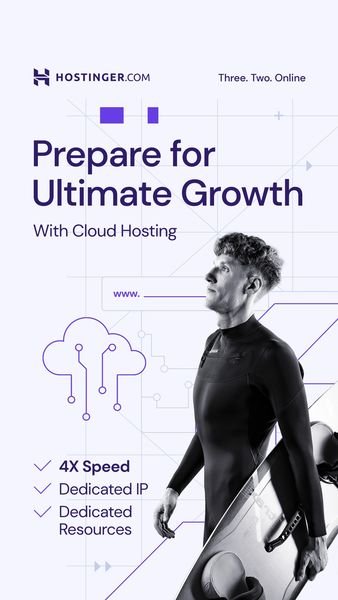In today’s data-driven world, the ability to capture and utilize customer data effectively can make or break a business. Data capture content is a powerful tool that allows brands to collect valuable information about their audience, which can be used to drive personalized marketing strategies, improve customer experiences, and ultimately increase conversions. This guide delves into the essentials of creating high-performing data capture content, the strategies behind it, and the best practices to maximize its effectiveness.
Understanding Data Capture Content
Data capture content refers to any content specifically designed to collect information from users. This can include a variety of formats such as forms, surveys, quizzes, gated content, and interactive tools. The primary goal is to gather data that can provide insights into customer behavior, preferences, and demographics, which can then be used to tailor marketing efforts and improve overall business strategies.
The Importance of Data Capture Content
Capturing data through content is crucial for several reasons:
Personalization and Segmentation
Collecting data allows brands to personalize their marketing efforts and segment their audience more effectively. By understanding individual preferences and behaviors, businesses can deliver more relevant content, offers, and recommendations, leading to higher engagement and conversion rates.
Improved Customer Experience
Data capture content helps businesses understand their customers better, enabling them to create more tailored and satisfying experiences. This can lead to increased customer loyalty and long-term retention.
Informed Decision-Making
Data-driven insights are invaluable for making informed business decisions. By analyzing the data collected through various content types, companies can identify trends, measure the effectiveness of their marketing campaigns, and adjust their strategies accordingly.
Types of Data Capture Content
Several types of content can be used to capture data effectively. Each type has its own advantages and can be employed in different scenarios depending on the goals and target audience.
Forms and Surveys
Forms and surveys are the most common types of data capture content. They are straightforward tools for collecting a wide range of information, from basic contact details to in-depth feedback and preferences. They can be used on landing pages, within emails, or embedded in blog posts and articles.
Quizzes and Polls
Quizzes and polls are interactive and engaging ways to capture data. They not only collect valuable information but also provide a fun and interactive experience for users. These can be used to gather insights on customer preferences, knowledge levels, or opinions on various topics.
Gated Content
Gated content requires users to provide their information before accessing high-value content such as eBooks, whitepapers, webinars, or exclusive reports. This strategy is effective for capturing qualified leads who are genuinely interested in the offered content.
Interactive Tools
Interactive tools such as calculators, configurators, and assessments can provide personalized results or recommendations based on user input. These tools are highly engaging and can capture detailed information about user needs and preferences.
Strategies for Creating Effective Data Capture Content
Creating data capture content that resonates with your audience and encourages them to provide their information requires a strategic approach. Here are some key strategies to consider:
Understand Your Audience
The first step in creating effective data capture content is understanding your audience. Conduct thorough research to identify their needs, preferences, and pain points. This will help you design content that appeals to them and encourages them to share their information.
Offer Value
To motivate users to provide their information, you need to offer something of value in return. This could be access to exclusive content, personalized recommendations, or a chance to win a prize. Make sure the value proposition is clear and compelling.
Keep It Simple
The data capture process should be as simple and frictionless as possible. Avoid asking for too much information upfront; instead, focus on collecting the most essential data initially. You can always gather more information later through progressive profiling.
Use Clear and Concise Copy
The copy used in your data capture content should be clear, concise, and persuasive. Clearly explain the benefits of providing the information and how it will be used. Transparency is key to building trust and encouraging users to share their data.
Design for Engagement
The design of your data capture content should be visually appealing and user-friendly. Use engaging visuals, interactive elements, and a clean layout to create an enjoyable experience for users. Make sure the content is mobile-friendly, as many users will access it from their smartphones.
Best Practices for Data Capture Content
To maximize the effectiveness of your data capture content, follow these best practices:
A/B Testing
Regularly test different versions of your data capture content to identify what works best. A/B testing can help you optimize various elements, such as headlines, copy, design, and call-to-action buttons, to improve conversion rates.
Optimize for SEO
Ensure your data capture content is optimized for search engines. Use relevant keywords, create compelling meta titles and descriptions, and follow SEO best practices to drive organic traffic to your content.
Leverage Social Proof
Incorporate social proof elements, such as testimonials, reviews, and user-generated content, to build credibility and trust. Highlighting positive experiences from other users can encourage new users to share their information.
Ensure Data Privacy
Respect user privacy and comply with data protection regulations. Clearly communicate how the data will be used, stored, and protected. Providing a link to your privacy policy can help reassure users and build trust.
Follow Up
Once you’ve captured data, it’s important to follow up with personalized and relevant communication. Use the information you’ve gathered to tailor your emails, offers, and content to each user’s preferences and needs.
Case Studies: Successful Data Capture Content Campaigns
HubSpot
HubSpot uses a variety of data capture content to gather information about their audience. They offer free tools, eBooks, webinars, and templates in exchange for user information. This strategy has helped them build a robust database of qualified leads and deliver highly targeted marketing campaigns.
BuzzFeed
BuzzFeed is known for its engaging quizzes and polls, which capture a significant amount of data about their audience. These interactive content pieces not only entertain users but also provide valuable insights into their preferences and behaviors, which BuzzFeed uses to personalize content and ads.
Neil Patel
Digital marketing expert Neil Patel leverages gated content, such as in-depth guides and webinars, to capture data from his audience. By offering high-value content in exchange for information, he has built a large and engaged email list, which he uses to nurture leads and drive conversions.
Future Trends in Data Capture Content
As technology and consumer behavior continue to evolve, so will data capture content strategies. Here are some trends to watch:
Artificial Intelligence and Machine Learning
AI and machine learning can enhance data capture content by providing more personalized and predictive experiences. These technologies can analyze user behavior in real-time and adjust content accordingly, increasing engagement and data collection efficiency.
Chatbots and Conversational Marketing
Chatbots are becoming increasingly popular for data capture. They provide a conversational experience that can guide users through the data capture process, answer questions, and provide immediate value. This interactive approach can lead to higher conversion rates.
Voice Search and Smart Devices
With the rise of voice search and smart devices, optimizing data capture content for voice interactions will become increasingly important. Brands will need to create content that is easily accessible and navigable through voice commands, making it convenient for users to provide their information.
Conclusion
Creating effective data capture content is essential for any brand looking to thrive in today’s competitive landscape. By understanding your audience, offering value, and following best practices, you can capture valuable data that drives personalized marketing strategies and improves customer experiences. As technology continues to evolve, staying ahead of trends and leveraging new tools will be key to maintaining a successful data capture strategy.














